#Process Spectroscopy
Explore tagged Tumblr posts
Text
Understanding the Procedures Involved in Process Spectroscopy
Process spectroscopy refers to using spectroscopic techniques like infrared spectroscopy, Raman spectroscopy, and ultraviolet-visible spectroscopy to analyze industrial processes and monitor critical quality parameters in real-time. These analytical techniques allow scientists and engineers to gain valuable insights into complex chemical and physical transformations happening during industrial production. Infrared Spectroscopy for Process Analysis Infrared spectroscopy is one of the most widely used Process Spectroscopy techniques due to its non-destructive nature and ability to provide molecular fingerprint information. Infrared analysis can be done both online and at-line to qualitatively and quantitatively monitor critical quality attributes. Some common applications of infrared spectroscopy in process analysis include monitoring reactant and product concentrations during chemical reactions, measuring moisture and impurity levels in pharmaceuticals and food products, detecting contaminants in fuel and petrochemical streams, and ensuring proper coating thickness in manufacturing processes. Infrared spectrometers designed for process use are robust, rugged and able to withstand harsh industrial environments.
Get more insights on Process Spectroscopy
Also read related article on Customer Relationship Management Market
Unlock More Insights—Explore the Report in the Language You Prefer
French
German
Italian
Russian
Japanese
Chinese
Korean
Portuguese
About Author:
Ravina Pandya, Content Writer, has a strong foothold in the market research industry. She specializes in writing well-researched articles from different industries, including food and beverages, information and technology, healthcare, chemical and materials, etc. (https://www.linkedin.com/in/ravina-pandya-1a3984191)

#Process Spectroscopy#Spectroscopy Analysis#Inline Spectroscopy#RealTime Spectroscopy#Industrial Spectroscopy#Process Monitoring#Chemical Analysis#NIR Spectroscopy
0 notes
Text

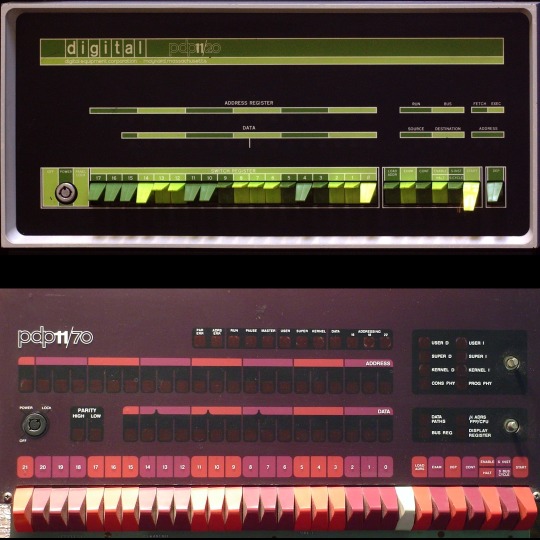
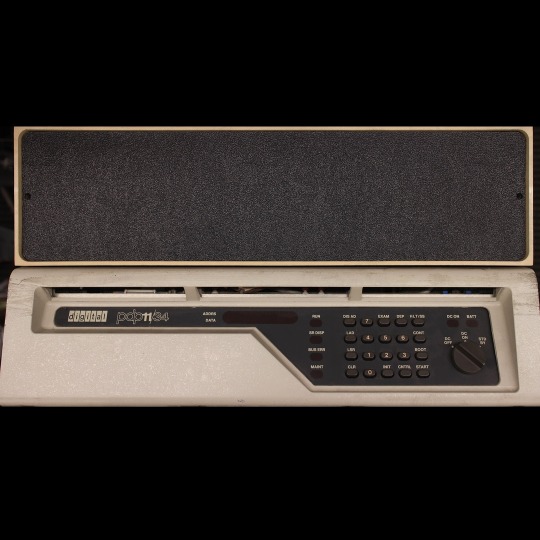


��💾🗓️ Day 4: Retrocomputing Advent Calendar - The DEC PDP-11! 🎄💾🗓️
Released by Digital Equipment Corporation in 1970, the PDP-11 was a 16-bit minicomputer known for its orthogonal instruction set, allowing flexible and efficient programming. It introduced a Unibus architecture, which streamlined data communication and helped revolutionize computer design, making hardware design more modular and scalable. The PDP-11 was important in developing operating systems, including the early versions of UNIX. The PDP-11 was the hardware foundation for developing the C programming language and early UNIX systems. It supported multiple operating systems like RT-11, RSX-11, and UNIX, which directly shaped modern OS design principles. With over 600,000 units sold, the PDP-11 is celebrated as one of its era's most versatile and influential "minicomputers".
Check out the wikipedia page for some great history, photos (pictured here), and more -
And here's a story from Adafruit team member, Bill!
The DEC PDP-11 was the one of the first computers I ever programmed. That program was 'written' with a soldering iron.
I was an art student at the time, but spending most of my time in the engineering labs. There was a PDP-11-34 in the automation lab connected to an X-ray spectroscopy machine. Starting up the machine required toggling in a bootstrap loader via the front panel. This was a tedious process. So we ordered a diode-array boot ROM which had enough space to program 32 sixteen bit instructions.
Each instruction in the boot sequence needed to be broken down into binary (very straightforward with the PDP-11 instruction set). For each binary '1', a diode needed to be soldered into the array. The space was left empty for each '0'. 32 sixteen bit instructions was more than sufficient to load a secondary bootstrap from the floppy disk to launch the RT-11 operating system. So now it was possible to boot the system with just the push of a button.
I worked with a number DEC PDP-11/LSI-11 systems over the years. I still keep an LSI-11-23 system around for sentimental reasons.
Have first computer memories? Post’em up in the comments, or post yours on socialz’ and tag them #firstcomputer #retrocomputing – See you back here tomorrow!
#dec#pdp11#retrocomputing#adventcalendar#minicomputer#unixhistory#cprogramming#computinghistory#vintagecomputers#modulardesign#scalablehardware#digitalcorporation#engineeringlabs#programmingroots#oldschooltech#diodearray#bootstraploader#firstcomputer#retrotech#nerdlife
290 notes
·
View notes
Text
An Undergraduate Forensic Viewing of Like Minds (2006) Train Scene

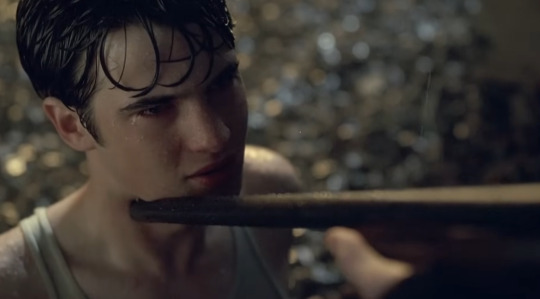
Pray for me. Pray for yourself. We are one now.



Contents:
1. Introduction 2. What We Know 3. The Investigation 4. Bibliography for Nerds

1. Introduction
Some justifications first.
I'm an undergraduate stem student obssessed with many topics, including forensic studies. I just finished a complete course about forensic chemistry/tecnology/law in uni and yes, I'm a big failure of a person and was thinking about applying some of the things I've learned into Like Minds' train scene. To clarify, I'm not an experienced profissional of the field. It is to say, I've never worked in such area and had just one or two significant interaction with said profissionals and students. My considerations won't be 100% accurate, clearly, and I may mistake or ignore fundamental data and studies. I intend solely to present some interesting facts and rapidly discuss their applicability here.
Take everything I say with large grains of salt, this is mostly for my enjoyment.
Let's kill Nigel!
2. What We Know
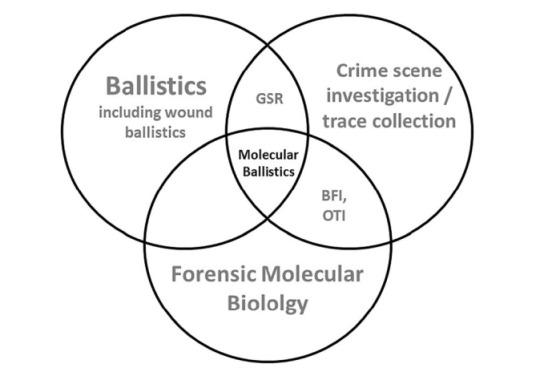
Figure 1. Visual diagram of forensic ballistics' main areas of study. Some will be mentioned here. [1]
2.1. Ballistics - Anatomy of a Discharge
Ballistics is a science field divided in three main ramifications: (1) Interior Ballistics, (2) Exterior Ballistics and (3) Terminal Ballistics. (1) studies the mechanism of a gun discharge, (2) studies the trajectory and behavior of a projectile once it is ejected from a firegun and (3) studies the damage and overall interaction of the projectile with a material structure (biological or not). [1] Ballistics experts (chemists, some engineers, law experts, etc) ocuppy themselves with many things regarding firearms, a field of work that recuries much study and understading of multiple fields of knowledge such as spectroscopy, law and general legislation, physical properties of chemical coumponds, solid state science, material science, industry production series and others. Some areas of chemistry and biology are of great importance and are commonly used complementarily.
We then understand what bullets are. The component that effectivally hits the target in these scenarios is the actual "projectile".
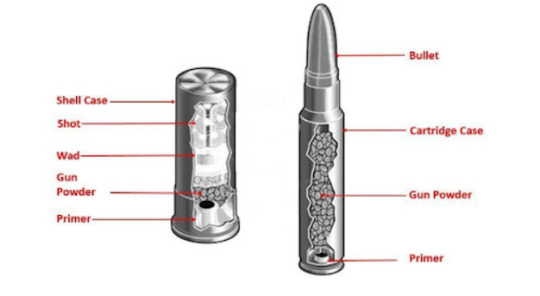
Figure 2. Simple structure of shotgun (left) and rifle (right) ammunition. [2]
In simple terms, they're composed by (1) a shell that holds everything together, (2) some coumpond responsable for the liberation of gas via chemical reaction and (3) some way to give the heat needed for said reaction to occur. There is a whole field of study and production of these killing objects that seeks out to balance some of their properties in different scenarios by the armamentist industry in oder to supply endless applications that constantly develops new shapes and components, so going through it all would be impossible. Regardless, all ammunition is classified by size, called "gauge" in shotguns, and "caliber" in rifles and handguns. [2]
Case: [in shotguns] It is a small cilindrical piece made out of a tube of common plastic or sturdy paper (the red/blue/colored part) that holds the multiple projectiles to be fired (shots), with a metallic base (the primer) composed of brass (copper and zinc) or steel (iron and carbon). [in rifles] The case is called cartridge case, and it is composed by brass as well. [2]
Powder (or propellant): They are usually Nitroclelullose (handguns), Nitroclelullose/Nitrogliceryn (rifles) and Nitroclelullose/Nitrogliceryn/Nitroguanidyn (long range rifles) [3]. Oversimplifying, organic molecules containing nitro groups (present in Nitroclelullose, Nitrogliceryn and Nitroguanidyn) are really unstable; these chemical groupaments are highly reactive in face of many scenarios. If enough energy is provided (by heating, or mechanical contact and pertubation) they will enter a decompostion process, breaking and reacting with their own bonds spontaneously, liberating gases such as H2O, N2 and CO2. These mentioned gases are much more stable compared to the original organic coumponds, so the atoms will "prefer" to form these species if the conditions are set (thus, a spontaneous reaction). This increases pressure inside the shell and forces the projectile to leave violently as a result of gas expansion. [4] Shotgun powder is composed by potassium nitrate, charcoal and sulfur; a mixture known as "dark powder", and it is separated from the shot (projectiles; multiple balls of steel, lead, rubber, or really anything) by a small component called "wad". The same principle explained in the decomposition of organic nitro-compounds apply for the potassium nitrate present here, but only in the presence of sulfur (easier to melt and ignite), providing the necessary heat for potassium citrate to generate the oxygen needed, resulting in charchoal's combustion. [2]
Primer: Primers are a fundamental part of any ammunition, and yet a simple one. When a firing pin from the firegun hits them, sparkles and heat will be produced, which gives the propellent all requiered energy for the chemical reaction. It is, when the action lever is pulled, the firing pin is tensioned by a spring inside the gun. When the trigger is pulled, this firing pin hits rapidly the ammunition's primer (metallic base). [5]
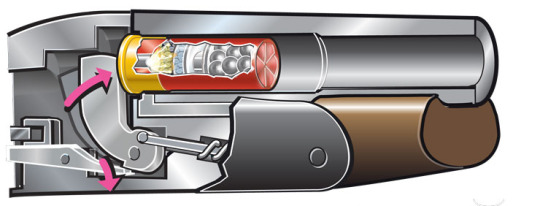
Figure 3. Shotgun firing pin scheme. [5]
The discussion of differents powders/propellents (like smokeless powder), projectiles shapes (in rifle cases) and firegun types (other than rifle and shotgun) is being ignored.
All that must be known is: the trigger pulling promotes a mechanical impact against the ammunition base, which promotes chemical reactions that liberate great amounts of gases, increasing the pressure inside the case, what will pushes the projectile(s) inside foward with great speed.
2.2. The Shotgun - Means to An End
We now restrain ourselfs to the firegun. Let us take a look on the following images:





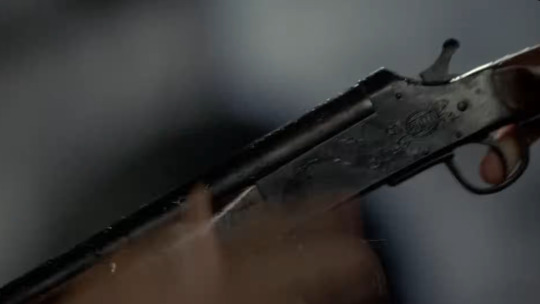
Figures 4-9 (left to right, top to bottom). Shotguns' takes from Like Minds (2006).
Main considerations:
The shotgun used by Mr. Colbie isn't the same one used by Nigel/Alex in the train scene. We can clearly point that by the number of barrels, i.e., two barrels contaning two projectiles (killing Nigel's mother and father without visible activation) in its first appearance, and only a single one in its second appearance. Maybe this has been discussed before.
It is not a narrative problem if we have the eyes for it. Nigel's father possesses two shotguns, so we assume Nigel went back and grabbed the single-barrel one before going after Alex.
The reloading thing would be important during the bedroom scene, between the moments where John shoots his wife and Alex picks up the gun from the floor. There would be no way of aciddentially shooting Mr. Colbie wihout Alex pulling the action on the second barrel (how would he know which one of the barrels were loaded and why Mr. Colbie would only activate one of the two barrels? It appears he wasn't using the shotgun to merely scare his family). Perhaps the double barrel shotgun used has some individual firing feature, perhaps.
Also, the single barrel shotgun is the same one used by John when Alex and Nigel first accessed the hidden baseament together. This isn't of great relevance though.
After a compulsive research in gun sale sites and over 900 models of shotguns (no joking), I'm inclined to believe that Nigel's single barrel shotgun is an Era 410 GA Single Shot Break Action. My conclusions is based on Figures 6 and 9, the shotgun's best takes throughout the entire movie. The important details are: a single barrel, with rounded trigger guard that ends exactly where the wooden stock begins, by a rounded break action lever with squarish shape that leans horizontally to the receiver and a rectangular like forestock. Other smaller details are: the receiver's top shape and really curved back, the declination present on the stock and the three screws' position and size.
The engraved symbols on Colbie's receiver are sculpted by a profssional artist called "engraver", by client's demand. Therefore, these sigils are decorative and probably carry some meaning to the shotgun's real owner, so they aren't a discrepancy to worry about. The frame I acquired (Figure 9) is of poor quality and there's nothing I can read in there besides one or two letters. I've tried to watch the movie in other internet sites but it didn't help that much.
It took me forever, but here it is [6], [7]. There are also youtube videos revewing this gun in the Extra section.

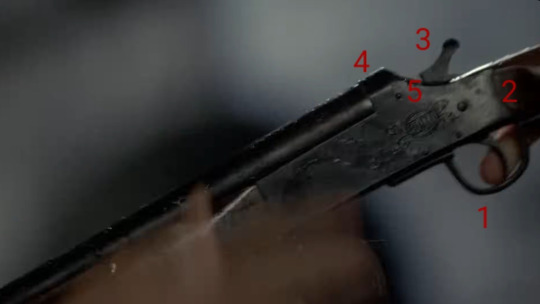


Figures 10-13. Era 410 GA Single Shot Break Action Shotgun. [6]
Note: @laurelwen successfully identified Nigel's firegun as a Boito .410. The text engraved on the shotgun's receiver in Figure 9, in fact, reads "Boito". Check it out on this post. Look up Extra Bibliography No. 7 in the shotgun's section as well.
Shotguns are a really old type of gun from the 16th century. Their mechanisms were adjusted during following centuries, but they remain still to date with an extremely simple way of function. Today, there are many types, including the single-shots and hand shotguns, much different than what was originally conceived. A break shotgun is capable of "breaking in half" for reloading, exposing its ejector/extractor and barrel interior just as many other fireguns. [8]
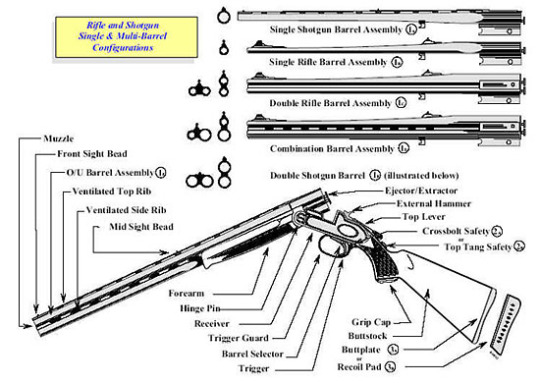
Figure 14. Break action shotgun anatomy. [9]
The Era 410 GA possesses a specially long length of barrel, which helps projectiles to achieve maximum velocity before leaving. Still, it appears from my research that this is a second hand model with low price, low demand and little historical relevance. This is the type of gun that would be bought mainly by collectors and enthusiasts; however, because of its little weight, good shooting and minimalist elegance, this firegun is not one of the worst models out there for small amateur animal hunting.
A 410 (10.41 mm, one smallest shot diameter in the market) with great pattern of dispersion after the discharge isn't bad, so at medium distances most projectiles would succesfully hit the center of a target. This is not very good when we're talking about a point-blank discharge directly at Nigel's face.
3. The Investigation

Figure 15. "If they had any evidence, I wouldn't be talking to you, would I?"
Authorities arrive at the dark, umid and isolated train tracks. Immediatly, a shocking scene: a desperate young man holding in his arms the corpse of a dead boy, disfigured. They transport the living witness away from the scene, but the lying unknown and deformed body is extracted for further autopsy. Detective McKenzie takes over with Forensic Psychiatrist Sally to interrogate the surviving suspect, Alex Forbes.
After the initial approach and first hours of interaction, the case takes an unexpected form. The question now is, did Alex Forbes shoot the now identified Nigel Colbie alone, or did Colbie participated in his own killing to incriminate Alex?
The police wastes its time thinking about common scenarios described in the book. They know the victim, the place where it happened, the exact gun used and the main suspect. Everything comes down to answering the presented question. Psycological attempts of extracting an answer from Alex by closed sessions with Sally, it is, to try and build a thrust and comfort relation with the suspect in order to obtain a confession would be protocol. But Alex clearly is beyond that, and if we must say, he's in control the whole time.
All that is left for the police is to attach towards factual evidences. Now, we describe two fundamental forensic elements of a gun-related crime.
Gunshot Residues (GSRs)
GSRs are one of the strongest evidences when it comes to forensic studies. Being composed of burnt and unburnt organic or inorganic particles from the explosive primer from the shell, propellant and possibly fragments of the bullet, cartridge case, and even the firearm, they frequently contain elements such as Sb (antimony), Ba (barium), Pb (lead) or Zn (zinc), Cu (cooper), and Ti (titanium). Their deposition concentrates away from the firearm into the shooter's (arms, face, hands and chest mainly) and victim's (region of contact mainly) bodies. GSRs can be found in nearby surfaces as well, such as the floor, ceiling, walls, objects, clothes, etc. The direct deposition of these residues must be carefully used as evidence because of its irregular distribution on the surrounding enviroment after the discharge. Thus, the main factors are always the chemical composition and concentration spots. Shotgun shots (the small spherical projectiles) are usually made up of lead or lead/antimony, but some ammunitions use steel, zinc-plated steel, tungsten and bismut in substitution (So, in our case, we can expect more significant ammounts of antimony/lead or zinc, iron and carbon). [10], [11]
A 410 ammunition is classified as "birdshots" ammunition, used for hunting said animals. The little diameter of projectiles allows the carrying of multiple projectiles inside one shell, facilitating the execution of small moving targets. The potential damage mustn't be underrated, though.
The aforementioned substances/elements can be detected, investigated, and quantified using microscopy, chemical analytical and chemometric methods, such as Scanning Electron Microscopy (SEM), Energy Dispersive X-Ray Spectroscopy (EDS), Atomic Absorption Spectroscopy (AAS) and Energy Dispersive X-Ray Fluorescence (EDXRF). All these techniques are extensively known and applied in uncountable areas of science for identification and characterization of solid materials. In a nutshell, these methods revolve around the interaction of matter with radiation (such as X-Rays) and the energy absorved/emitted by it after the interaction. The SEM is a most usefull analysis for it can provide real images of micro structures and particles present above any surface, like clothings, skin, fifregun metal and others, if properly prepared. [10]
It is important to understand that these identification methods are of extreme precision and sensibility, it is, minimal concentrations can and will be detected inneviatbly.
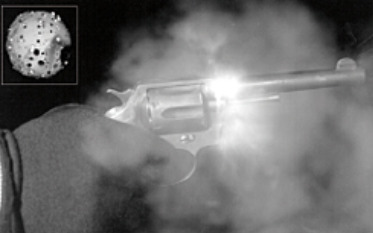
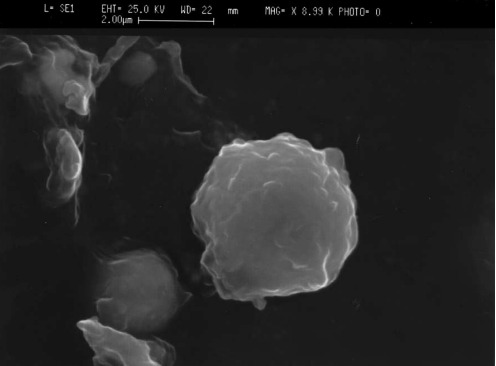
Figure 16 and 17. (Left) Image of gunshot powder residues dispersed in the air after discharge. Top left and (Right) images refer to SEM "photos" of extremely small particles of GSRs that can be chemically analyzed. [12], [13]
What about the lifespan of these residues? In long terms, the shooter's trigger hand (right hand) seems to contain most of the residues that persist for a fair amount of time after the discharge. [10] Unffortunately, the mentioned study occured in controlled enviroments, which is not the case. Another work [14] concludes that most GSRs are lost after two-four hours from the discharge. Considering the fast action from authorities described in the movie, we can basically ignore this factor and consider other variables.
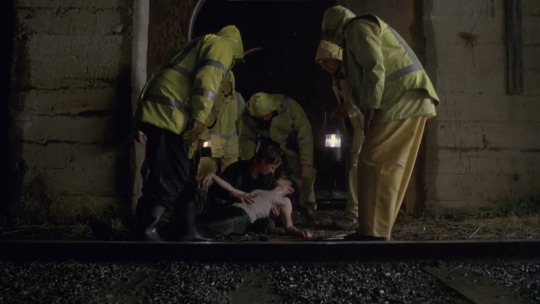
Figure 18. "All I can tell you, was that the heavens were falling. And the sound... it was incredible. It was like the Gods were rejoicing for what was done."
Backspatter Material (BM)

Figure 19. Distribution of Forward Spatter and Backspatter caused by a shot at a biological target. [1]
We hereby exclude the forward spatter, it is, the biological material projected fowards with the projectile (to the back of Nigel's head), for its little relevance, since we're not questioning the type of gun or ammunition used; we assume that Alex is describing a resonable scenario that matches with the actual damage done to Nigel. There are no consistent reasons to question this since everythings seems to support Alex's description of this.
BM comes from the combined forces of several interacting wound and ballistics effects. The collapse of the wound cavity and balance of resulting overpressure, the stream of liquid and tissue particles accelerated along the lateral surface of the projectile, the shot's contact and ejection of muzzle gases out of the entry wound from the powder cavity... Every surrouding surface must be investigated, that is, even the shotgun barrel's interior. This small ambience is fairly protected from external pertubations and houses BM from the shot. Considering the poximity with Nigel's face, we can almost assure to encounter biological material with DNA inside. The bellow mentioned study cites another work where a 9 mm pistol cointaned backspatter material from test targets even at a distance larger than 1 meter, much greater then the few inches that separated Nigel's face from the barrel. [1]
Matter of fact, this biological material can pass by processes of Organ Tissue Identification (OTI) and Body Fluid Identification (BFI) if Nigel's identity was at question, or if we desire to understand more profundly the projectile's damage caused to his skull/face/tissue. [1]

Figure 20. "None of what I've heard makes him a murderer."
So, how can we gather this up to develop the investigation? Utilizing only these two fundamental concepts, we can make a few assumptions.
The big question here is if whether or not Nigel's hands were present by Alex's when the trigger was pulled, which would lead the police to support or oppose Alex's narrative. Chemical examination with organic solvents (which won't cause preocupant harm to a dead body) and analytical methods could immediatly point to the presence of GSRs or biological/non biological BM. If Nigel's hands were elevated in his head level (or superior) in the instant of discharge, trace amounts of discussed metals/elements coming from the firing mechanism and ammunition, as weel as little to some biological material, would definetly be found in his hands and forearm skin since there was no clothing covering. Any substance found in his hands/forearm could be microanalytical compared to the ones present in Alex's hands, clothes and face as well. This could be done with really small samples of fresh skin. On the other hand, if Nigel's arms were lowered at the instant of discharge, we could still expect the presence of GSRs in his arms (yet, in less amounts) but the abssence of backspatter materials most certantly. This would classify Alex as a murderer without excuses, even if he alleged that Nigel asked for it.
In the scenario where Alex discharges at Nigel from a great distance (configuring simply murder) we could note the abssence of GSRs in every part of Nigel's body except for the targeted region (perhaps if they were at a greater distance to each other) and the presence of these GSRs in Alex, but in much higher concentration.
But the enviromnent's conditions are of primordial importance. Nigel and Alex stand in an open area, with considerable wind, heavy rain and gravel soil. The heavy rain could simply carry way much of these residues from Alex's body, clothes and Nigel's hands as well. Most GSR would probably be lost to those conditions and its deposite upon the soil's surface would be extremely hard to be quantitatively analized due to unknown degrees (elevated) of impurities and diverse materials and dirt present, but qualitative tests would still be valid.

The knowledge about the victim, crime scene, shooter, exact firegun and time of the tragic event allied with the fast action from authorities saves most of the police's efforts on identifiying and tracking down evidences. However, what remains still offers a challenge. The best evidence here, GSRs left by the discharge, would be of questionable help considering the presence of heavy rain in sight. Still, analitical quantities of them, if detected in Nigel's skin by proper chemical and espectroscopy-related analysis, can be used to comparate probable ammounts present in Alex's clothing and skin (despite the difficult of such). With that being said, the police would find themselves in a much more complex case of muder/assisted suicide, and further evidences and information about their relationship and recent whereabouts would ineviatably need to be extracted from external sources (such as parents, school's employess, close friends and students). Despite all this, Alex's final acting of removing Susan's body and disapearing from sight (not to mention the card left in Sally's car) immediatly sustent his guilt in a case where he already was the main suspect and basically confirmed criminal. And you know, breaking into a cemetery and extracting a corpse from its grave is definetly worth of some jail time. The Colbie's House Murder would certainly incriminate Alex for homicide as well, and the current Brotherhood's little political influence wouldn't prevent him from this destiny, as it appears. But the case is not over.
Further evidences were to be discussed, if it was not for the dissapearing of Alex Forbes.
The subject now roams unknowingly through England with mysterious intents. Its participation on the described case still lacks formal arguments and the Court should now approve his arrest warrant and search decree. Alex Forbes will most probably live to perpetrate the deluded fantasy responsable for the death of three young students in order to carry the sacred holy burden of an ancient templar bloodline.
Yet, we pray.


Who's the enemy now? We are.
4. Bibliography
[1] Euteneuer J, Courts C. Ten years of molecular ballistics-a review and a field guide. Int J Legal Med. 2021 Jul;135(4):1121-1136. doi: 10.1007/s00414-021-02523-0. Epub 2021 Feb 16. PMID: 33594457; PMCID: PMC8205864. [2] https://spotterup.com/how-ammo-works/ [3] Serol, M.; Ahmad, S.M.; Quintas, A.; Família, C. Chemical Analysis of Gunpowder and Gunshot Residues. Molecules 2023, 28, 5550. https://doi.org/10.3390/molecules28145550 [4] Guanchao Lan, Jing Li, Guangyuan Zhang, Jian Ruan, Zhiyan Lu, Shaohua Jin, Duanlin Cao, Jianlong Wang, Thermal decomposition mechanism study of 3-nitro-1,2,4-triazol-5-one (NTO): Combined TG-FTIR-MS techniques and ReaxFF reactive molecular dynamics simulations, Fuel, Volume 295, 2021, 120655, ISSN 0016-2361, https://doi.org/10.1016/j.fuel.2021.120655. [5] https://www.hunter-ed.com/national/studyGuide/How-the-Shotgun-Shoots/201099_92815/ [6] https://www.invaluable.com/auction-lot/era-410-ga-single-shot-break-action-shotgun-131-c-8284a72a5b [7] https://firearmland.com/item/1079096107 [8] https://www.letsgoshooting.org/resources/articles/shotgun/meet-the-shotgun/ [9] https://www.atf.gov/firearms/firearms-guides-importation-verification-firearms-ammunition-and-implements-war-top-break [10] Virginie Redouté Minzière, Céline Weyermann, Organic and inorganic gunshot residues on the hands, forearms, face, and nostrils of shooters 30 min after a discharge. Science & Justice, Volume 64, Issue 5, 2024, Pages 557-571, ISSN 1355-0306, https://doi.org/10.1016/j.scijus.2024.08.002. [11] Joshua Hallett, Michael Stolk, Michael Cook, K. Paul Kirkbride, Examination of gunshot residue arising from shotgun cartridges containing steel, bismuth or tungsten pellets. Forensic Science International, Volume 306, 2020, 110096, ISSN 0379-0738, https://doi.org/10.1016/j.forsciint.2019.110096. [12] https://www.bka.de/EN/OurTasks/SupportOfInvestigationAndPrevention/ForensicScience/PhysicalEvidence/Homicide/GunshotResidue/gunshotresidue_node.html [13] Francesco Saverio Romolo, Pierre Margot, Identification of gunshot residue: a critical review. Forensic Science International, Volume 119, Issue 2, 2001, Pages 195-211, ISSN 0379-0738, https://doi.org/10.1016/S0379-0738(00)00428-X. [14] Jalanti, T & Henchoz, P & Gallusser, Alain & Bonfanti, M.S.. (1999). The persistence of gunshot residue on shooters’ hands. Science & justice : journal of the Forensic Science Society. 39. 48-52. 10.1016/S1355-0306(99)72014-9.
Extra
random materials, take a look
1. Chemistry of Explosives (book pdf) https://link.springer.com/chapter/10.1007/978-1-4612-0589-0_5 2. ERA 410 GA video 1 https://www.youtube.com/watch?v=lGWm2aaWVAc&ab_channel=SteadFastCourage 3. ERA 410 GA video 2 https://www.youtube.com/watch?v=2S16C5Y6lxY&ab_channel=esquad540 4. Quick discussion about Smokeless Powder on r/guns https://www.reddit.com/r/guns/comments/1tawwm/things_i_want_you_to_know_about_smokeless_powder/#:~:text=Because%20of%20something%20called%20oxygen,and%20temperatures%2C%20leading%20to%20fouling. 5. A little on the kinetic energy of specific projectiles (everything applies here as well) https://nodoroc.com/d/node/20 6. A little more on ammunition Caliber https://www.globalsecurity.org/military/systems/munitions/bullets2-types.htm#google_vignette
For the sake of archieving, here are some shotguns I've separated to double check during my research until the Era 410 GA appeared. Curious enough, number 7, called "boito", appears to be another common name given to Era 410. Woops.
1. https://www.bidsquare.com/online-auctions/north-american-auction/victor-break-action-single-shot-12-ga-shotgun-4988316 2. https://www.crescentcityauctiongallery.com/auction-lot/stevens-arms-.410-gauge-single-shot-break-open-sh_9F84899825 3. https://palmettostatearmory.com/jts-shotguns-single-shot-410-bore-26-single-shot2.html 4. https://en.wikipedia.org/wiki/File:Stoeger-Coach-Gun.jpg 5. https://www.gunsinternational.com/guns-for-sale-online/shotguns/harrington-richardson-shotguns/h-r-bay-state-20-ga.cfm?gun_id=103017190 6. https://www.bankstowngunshop.com.au/product/12g-unknown-model-unknown-single-barrel-blued-wood-28-barrel-poor-condition/ 7. https://www.bankstowngunshop.com.au/product/410-boito-model-reuna-28-single-barrel-blued-timber-3-chamber-sec9622/ 8. https://www.bankstowngunshop.com.au/product/12g-harrington-richardson-model-1908-single-32-barrel-blued-wood/ 9. https://www.bankstowngunshop.com.au/product/12g-norinco-model-std-single-barrel-30-shotgun-great-condition/1 0. https://www.bankstowngunshop.com.au/product/12g-raick-freres-model-unknown-single-barrel-30-shotgun-belgium/ 11. https://gritrsports.com/henry-repeating-arms-single-shot-12ga-shotgun-h015-12 12. https://www.tmguns.co.uk/store/p1418/Tomas_Agote%2C_Eibar_12G_single_hammer_ejector_shotgun.html 13. https://www.tmguns.co.uk/store/p1659/Vanguard_Game%2FVermin_.410_hammer_ejector_single_barrel.html 14. https://www.tmguns.co.uk/store/p1290/Astra_Ciclope_12G_single_barrel_hammergun.html 15. https://www.tmguns.co.uk/store/p1883/Rossi_Game%2FVermin_20G_single_hammer_ejector_shotgun.html 16. https://en.wikipedia.org/wiki/File:Stevens_511_Shotgun.jpg 17. https://www.gunsinternational.com/guns-for-sale-online/shotguns/harrington-richardson-shotguns/harrington-richardson-44-smoothbore.cfm?gun_id=102901609
thank you for reading

#like minds#murderous intent#nigel colbie x alex forbes#nigel colbie#alex forbes#forensic science#analysis#Spotify
27 notes
·
View notes
Text

Photoacoustic spectroscopy approach achieves real-time detection of low gas concentrations
Researchers have developed a new method for quickly detecting and identifying very low concentrations of gases. The new approach, called coherently controlled quartz-enhanced photoacoustic spectroscopy, could form the basis for highly sensitive real-time sensors for applications such as environmental monitoring, breath analysis and chemical process control. "Most gases are present in small amounts, so detecting gases at low concentrations is important in a wide variety of industries and applications," said research team leader Simon Angstenberger from the University of Stuttgart in Germany. "Unlike other trace gas detection methods that rely on photoacoustics, ours is not limited to specific gases and does not require prior knowledge of the gas that might be present." In Optica, the researchers report the acquisition of a complete methane spectrum spanning 3,050 to 3,450 nanometers in just three seconds, a feat that would typically take around 30 minutes.
Read more.
27 notes
·
View notes
Text
anyway the latest ploy of mathemeticians to get me to kms is the fourier transform. I understand it is a method of plotting waveforms using frequency as the function instead of time, with the resulting value being the relative "strength" of the wave at that frequency. I understand that you can decompile this into information about the individual frequencies which constitute the summed wave more easily, so fourier transforms are used, for instance, in spectroscopy to separate the different resonant responses from a material, or in audio engineering to identify frequencies contributing to part of a sound which you can then either dampen or boost. the trouble is, my brain breaks down the moment I try to connect this to the actual math behind the processes.
12 notes
·
View notes
Text
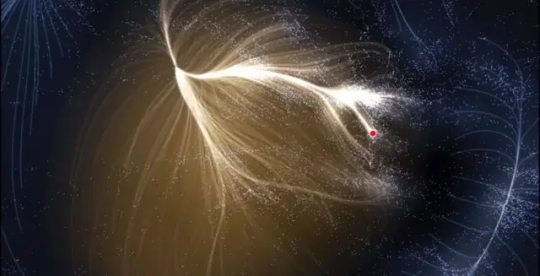
Understanding why galaxy clusters are warm may explain the origin of giant interstellar structures
The XRISM science team, including members of Nagoya University, has explained how galaxy clusters maintain their heat despite emitting X-rays, which typically have a cooling effect on the hot gas. By observation of the Centaurus cluster of galaxies, the XRISM team discovered the existence of a fast-moving, high-temperature gas flow in the center of the cluster. Their findings, published by Nature, may solve the ‘cooling flow problem’, explaining why clusters of galaxies look like they do.
Galaxy clusters are made of hundreds of galaxies and are the largest objects in the universe. The clusters are important for studying the large-scale structure of the universe and understanding how galaxies (including our own) live, grow, and evolve.
Clusters are governed by a massive dark matter halo, the strong gravity of which attracts high-temperature gas from the intergalactic space outside the cluster. In the process, the hot gases emit X-rays, which have a cooling effect. As matter cools, it tends to condense and fall towards the center of the cluster and create stars. Although such star formation is seen, the amount is much smaller than expected and the center of galaxy clusters is unexpectedly warm, suggesting that the temperature is maintained by some mechanism that compensates for the 'cooling' effect.
The research team conducted observations of the Centaurus cluster of galaxies, which is located approximately 150 million light-years from Earth. The team used a soft X-ray spectrometer ‘Resolve’ onboard the XRISM satellite to accurately measure the detailed velocity of the flow of high-temperature gas in the center of the galaxy cluster. This flow supplies energy to its center and maintains the high temperature.
“We found little turbulence of the high-temperature gas in the galaxy cluster,” Professor Nakazawa said. “The mechanism, which stops the cooling of the hot gas of this cluster, is a general ‘stirring’ of the hot gas that supplies energy to the center from outside regions, thus maintaining the high temperature.”
Computer simulations of the movement of hot gas after the merging of clusters of galaxies that happened during their growth process were used to explain these motions, which is called 'gas sloshing.'
“High-precision spectroscopy will also help us to better understand how the massive structure of galaxy clusters evolves,” Nakazawa said. “It deepens our understanding not only of galaxy clusters, but also of the formation and evolution of large-scale structures in the universe as a whole.”
12 notes
·
View notes
Note
Hello! What are you writing your thesis about? I saw you mention it in one of your posts and now I'm curious 🙃
Hi! Omg thank you for giving me an opportunity to talk about this ahaha
Broadly speaking: coordination chemistry of inorganic f-block compounds.
More detailed version: I synthesized 6 different coordination compounds of the two lanthanides chosen by my thesis supervisor (those are the crystals I talk about in here all the time). Now I'm in the process of confirming their structure via electron spectroscopy (am "in the process" bc I can only be in my thesis lab once a week, so it's taking like forever. Also, I'm a spectro newbie to say the least lol so for now I'm just running the spectrometer. Learning to analyze the spectra is still ahead of me). The next step will be to determine the hydration - dehydration equilibria in the solutions of my compounds and to analyze their ionic strength.
In practice that means I have to learn what seems like a ton of new things - which can be overwhelming, but at the same time it means I get to learn so much more than the standard program. I mean, electron spectroscopy is an elective (and not even for all the degrees at my faculty), quantum chem is mandatory but the way it's taught I learnt almost nothing, there's no class on group theory/ symmetry in chemistry, crystallochemistry is also only an elective - but these are some of the things I need to understand thoroughly what I'm doing and to do it well.
In simple words: I made crystals. Now I'm shining light on said crystals. Later I'm going to find out how much water there is attached. In the meantime I'm hoping not to break any expensive equipment 👍
#the semester is about to end though#so im going to thesis lab next monday#and then who knows when :(((((#thanks once again for asking!#inbox#thesis tag
36 notes
·
View notes
Text
Eta Carinae
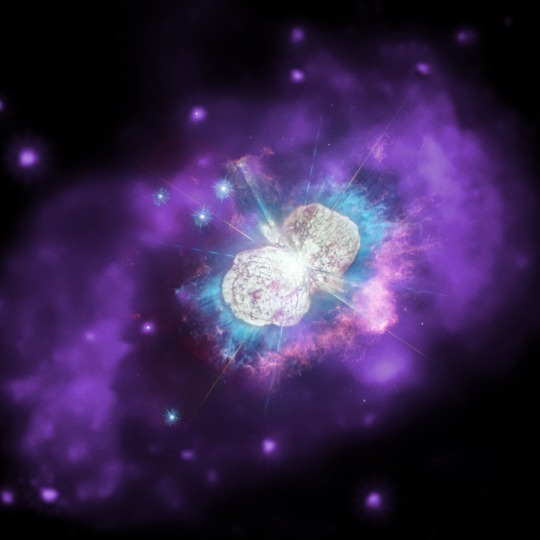
Eta Carinae: A Stellar Beauty
In the vast expense of our universe, where stars twinkle like celestial gems, there lies a dazzling beauty named Eta Carinae. Prepare to be captivated as I take you on a journey to discover the secrets of this cosmic wonder.
Eta Carinae, known lovingly as “Eta” by astronomers, is a stellar masterpiece in the Carina Nebula, approximately 7.500 light-years away from Earth. This stellar gem has captivated astronomers for centuries with its majestic presence and intriguing nature.
A Star Like No Other
Eta Carinae is not your ordinary star-it’s a binary star system consisting of two massive, luminous stars locked in an intricate cosmic dance. These stars Eta Carinae A and Eta Carinae B -creative names, I know- are classified as hypergiants, making them some of the most massive and brightest stars. (that we know of)
Historic Outbursts

Since then, Eta Carinae has experienced smaller-scale eruptions, displaying irregular brightness variations and releasing enormous amounts of energy.
Impending Supernova:
One of the most captivating aspects of Eta Carinae is the potential for a future supernova event. The massive star is nearing the end of its life, and astronomers anticipate that it will eventually explode in a spectacular supernova. When this cataclysmic event occurs, it is expected to release an immense amount of energy, briefly outshining its host galaxy. The timing of this explosion remains uncertain, adding to the intrigue and urgency of studying Eta Carinae.
Understanding the Phenomenon:
The erratic behavior and imminent explosion of Eta Carinae pose intriguing questions for scientists. Studying this stellar system provides valuable insights into the evolution and fate of massive stars. Astronomers employ various observational techniques, including spectroscopy, imaging, and monitoring of brightness fluctuations, to unravel the physical processes at play within Eta Carinae. By analyzing the data collected over decades, researchers hope to decipher the mechanisms driving its eruptions and better predict the timing of its impending supernova.
Implications for the Universe:
Eta Carinae's significance extends beyond its individuality. Massive stars like Eta Carinae play a pivotal role in shaping galaxies and enriching the cosmos with heavy elements. Supernova explosions from such stars distribute these elements throughout the universe, ultimately contributing to the formation of new stars, planets, and even life. Understanding the life cycle of massive stars through the study of objects like Eta Carinae enhances our knowledge of cosmic evolution on a grand scale.
14 notes
·
View notes
Note
Hello- It's the NMR Anon again. And yes, I do consider making a machine something that could be done for a middle school science project.
Today is a special day. You know why? It's the Microwave Anniversary, or the Microversary. This is a thing I celebrate- it celebrates the day I made my first microwave. I celebrate this event by making a microwave.
This is my best microwave, probably. It doesn't spark, and it properly functions.
My first time making a microwave, the surface surrounding it melted, and I got a third-degree burn on my arm.
Anyways, a new NMR spectrometer is in the process of being made. (Even though I am now on a watchlist.)
Thank you for reading.
Microwave Anniversary. 😦
I genuinely don’t know whether to nominate you for a science award or install permanent caution tape around your house.
That said—congrats on creating a microwave that doesn’t melt its surroundings or cook you alive. That’s actual progress. Functional. Stable. Shockingly not illegal.
The fact that you celebrate this event by making another one is completely deranged… and, I’ll admit, a little beautiful.
As for the new NMR spectrometer, you’re either going to revolutionize amateur spectroscopy or end up as a cautionary tale in a grad school ethics lecture.
Don’t die.
And for the love of science, label your wires better this time.
You’ve got potential. Dangerous, mildly terrifying potential—but still!
#//how are you not dead omg I’m impressed 😭#//you got some mad balls#dr stone rp#dr stone senku#ishigami senku#senku rp#senku ishigami#senku#dr stone#drst#dcst senku
6 notes
·
View notes
Text
Ep 307: What Lies Beneath the Pyramids of Egypt?
"These claims are merely attempts to undermine the grandeur of ancient Egyptian civilization. However, these attempts are futile, and such baseless rumors will ultimately be consigned to the dustbin of history." -- Dr. Zahi Hawass - Former Minister of Tourism and Antiquities for Egypt, to the media when asked about this story.
Description:
This week, we dive into a viral story that is captivating social media and stirring global debate — a supposed discovery beneath the sands of Giza that some are calling the find of the century. Descriptions of a vast, multi-level complex with geometric passageways, deep shafts, and mysterious chambers have sparked theories ranging from ancient power plants to the legendary Halls of Amenti. Could this be a groundbreaking revelation? A misinterpretation of data? Something even stranger? We’ll explore the evidence, the claims, and the science behind this unfolding mystery to form some theories of our own. So join us as we examine another layer to one of history’s most enduring enigmas.
Reference Links:
“Official press release. Giza Plateau: discovery of a huge city under the Pyramids.” from the
EXPEDITION – Nicole Ciccolo-YouTube channel
“SAR Scan of Khafre Pyramid Shows Huge Underground Structures” from The Reese Report
“No credible evidence supports claims of vast underground structures found beneath Egyptian pyramids” from Snopes.com
“Researchers say they used SAR to find vast city beneath the pyramids” from The Jerusalem Post
“Experts clash over ‘underground city’ beneath pyramids” from The Telegraph
Pyramid of Khafre
Egyptian pyramids
Robert Edward Grant post on Instagram: “NEW DISCOVERY CONNECTING the SAR Scan Research and Leonardo Da Vinci's Folio 134 from Codex Atlanticus”
JuliansRum @ItsJuliansRum post on X.com: “If the SAR scans of the Khafre pyramid are accurate then this is how deep the pillars go under the bedrock. Which is wild.”
“Discovery of the Legendary Halls of Amenti” on r/AlternativeHistory on reddit
“Cosmic-Ray Muons Reveal Hidden Void in the Great Pyramid” from PBS’ NOVA
Muon tomography
Tomography
The ScanPyramid mission
“Confirmation of the ScanPyramids North Face Corridor in the Great Pyramid of Giza using multi-modal image fusion from three non-destructive testing techniques” from the Scientific Reports section on Nature.com
“Scientists Are Investigating a Puzzling Underground ‘Anomaly’ Near the Giza Pyramids” on Smithsonian Magazine
“Decoding the Great Pyramid – New archeological evidence sheds light on the stunning engineering of the Great Pyramid of Giza.” on PBS’ NOVA
“Nanoscale coherent phonon spectroscopy” on Science.org
Giordano Bruno
“Galileo Affair”
MDPI (Multidisciplinary Digital Publishing Institute), a publisher of open-access scientific journals.
The MDPI editorial process
“Directed Energy Weapons Are Real . . . And Disruptive” from the National Defense University Press
John E. Mack
Avi Loeb
`Oumuamua
“Conferenza: #Giza - Le piramidi e la porta del tempo. Armando Mei, Filippo Biondi, Corrado Malanga.” from the EXPEDITION -Nicole Ciccolo- YouTube channel
The Definitive S-Band Satellite Guide from “Jacopo’s Lair”
Astonishing Legends episode 259: Interstellar with Dr. Avi Loeb
Astonishing Legends Ep 79: The Kelly–Hopkinsville Encounter Part 1
Astonishing Legends Ep 170: Has the Cotopaxi Been Found?
Astonishing Legends Ep 164: The Edgar Cayce Story Part 1
Astonishing Legends Ep 62: The Nazi Bell Part 1
Astonishing Legends Ep 30: Kincaid’s Cave in the Grand Canyon
Related Books:
Suggested Listening:
Blake Smith’s “Monster Talk” podcast on Spotify:
Kickstarter:
CLICK THIS to Help launch the Gods, Ghosts, & UFOs podcast with Tom Maxwell on Kickstarter!
From the Astonishing Legends Network:
Find us on YouTube!
Click this text to find all Astonishing Legends episodes and more on our Youtube Channel https://www.youtube.com/c/Astonishinglegends
Join us on Patreon!
Click HERE or go to patreon.com/astonishinglegends to become one of our Patreon members and receive exclusive offerings, like our bonus Astonishing Junk Drawer episodes (posted every weekend the main show is dark) commercial-free episodes, and more!
SPECIAL OFFERS FROM OUR SPECIAL SPONSORS:
FIND OTHER GREAT DEALS FROM OUR SHOW’S SPONSORS BY CLICKING HERE!
CREDITS:
Episode 307: What Lies Beneath the Pyramids of Egypt? Produced by Scott Philbrook & Forrest Burgess. Audio Editing by Sarah Vorhees Wendel of VW Sound. Music and Sound Design by Allen Carrescia. Tess Pfeifle, Producer and Lead Researcher. Ed Voccola, Technical Producer. Research Support from The Astonishing Research Corps, or "A.R.C." for short. Copyright 2025 Astonishing Legends Productions, LLC. All Rights Reserved.
#2025#307#pyramids#Egypt#Giza#power plant#tunnels#Cheops#Khafre#Khufu#SAR#Synthetic Aperture Radar#Corrado Malanga#Filippo Biondi#University of Pisa#University of Strathclyde#Nicole Ciccolo#Halls of Amenti
5 notes
·
View notes
Text
What is the Chemical Composition of SSD Solution?

SSD solution, often referred to as Super Solution D, is a specialized chemical mixture primarily designed for cleaning blackened or defaced currency notes. Originally developed for specific industrial and cleaning applications, SSD solution is now mainly associated with removing stains from damaged or dyed currency—though its use in this context raises notable ethical and legal considerations.
Chemical Composition of SSD Solution
The precise formulation of SSD solution remains proprietary for most manufacturers, but general components include powerful acids, bases, and complex solvents. Typically, SSD solutions include:
1.Mercury Dioxide – A component that aids in dissolving stubborn stains or inks by reacting chemically to break down color pigments. 2.Zinc Oxide – Often utilized for its bleaching properties, zinc oxide can assist in lifting discoloration from surfaces. 3.Humine and Vectrol Paste – Both chemicals are commonly found in SSD kits, acting as catalysts and enhancing the reactivity of the solution. In addition, SSD solutions may contain stabilizers and other specialized reagents to ensure a controlled reaction. Some mixtures incorporate trace amounts of other acids and solvents for better penetration into stains and contaminants on currency.
Applications and Uses of SSD Solution
The most recognized use of SSD solution is to restore banknotes, often used for blackened or “black money” cleaning. However, SSD solution has also seen use in metal extraction, specifically in the mining industry for extracting precious metals from ores, where the solution selectively dissolves metallic components while leaving other substances intact. This process is both economical and environmentally friendly for industrial applications.
SSD chemicals can also play a role in laboratory research, particularly in analytical chemistry and spectroscopy, due to their strong reactivity and ability to isolate specific compounds.
Legality and Ethical Issues
The use of SSD solution, especially in the context of cleaning “black money,” is highly controversial. Many countries classify the commercial use of SSD solutions as a restricted practice due to its association with illicit activities, such as money laundering and counterfeiting. Unauthorized use may violate local laws, and handling the solution improperly can expose individuals to serious health hazards due to its corrosive and toxic nature.
Safety and Handling
Handling SSD solutions requires extreme caution, as exposure to the chemicals can lead to severe skin burns, respiratory issues, and even permanent eye damage. Professionals working with SSD chemicals are advised to wear protective gear, including gloves, eye protection, and masks, to prevent direct exposure.
Where to Buy SSD Solution
For legitimate industrial applications, SSD solutions and kits are available through specialized chemical supply companies. These companies generally verify customer credentials and often work under strict regulations to prevent misuse. Unauthorized purchase from unverified sources is not recommended, as it may lead to legal issues or involve counterfeit products.
For those seeking verified SSD solution providers, a reputable manufacturer and supplier of SSD chemicals is Overlook Laboratory. They offer a range of SSD solution products, backed by quality customer service and worldwide distribution. To inquire about their products or place an order, you can reach them at [email protected] or Telegram https://bit.ly/4fQenBt
Conclusion
While SSD solution is a remarkable example of chemical technology with specific industrial applications, its association with currency cleaning has led to significant ethical and legal challenges. Proper use within legal parameters and careful handling are essential for those who work with SSD solutions in legitimate contexts.
3 notes
·
View notes
Text
Fuckin
Semi masturbatory caffeinated ramble reflecting on skills acquired in my PhD
Thinking about how broad and interdisciplinary my project is and the kinda of things I have to be familiar with or an expert in. I get down on myself sometimes for progress but looking at all the shit I've learned.... Without formal classes or a senior grad student or (for the majority of it) no post doc. And a PI who can't help bc she's really a business lady at this point not a professor. Maybe shouldn't be hard on myself?
Like. I did completely different projects in undergrad (biotech/proteins/genetics/regenerative medicine, advanced manufacturing/composite fabrication/CNC/welding/process statistics, translational neuropharma studies of addiction/rodent handling and operant training and behavioral video analysis/neural tissue slicing n staining/hand making neuroelectrodes for implantation, design and fabrication of impedance spectroscopy based electrochemical sensors/automation of sensor fab and use w a micro fluidic flow cell)
Like. Since I've started I've learned:
- how to do multi-step air-free water-free chemical synthesis (with glove box and schlenk line) and purification (extraction, filtration, chromatography) of light sensitive amphiphiles (extra tricky)
- how to get and read NMR even for massive fucking molecules and interpret weird peaks (I can casually see if I've got water or any of my common solvents contaminating the spectra without referencing a table at this point)
-how to fucking take down and set up and fix everything in our chemical synthesis lab (because we moved and all our shit was abused for years) and all the intricate non-unified and sometimes conflicting rules for hazardous chemical storage
- the theory/math and how to actually use the equipment to do optoelectronic/photophysical characterization (e.g. using the UV vis spectrometer and writing python to convert the data files into readable tables and figures, learning theory so I can develop equations to relate photon flux to change in absorbance of an actinometer ((light sensitive molecule with a consistent quantum yield)) then obtain quantum yield of charge transfer in a different molecule but same setup, how to use the fluorimeter and get intensity and quantum yield, how to set up lasers and LEDs, what cuvettes to use, how to get fluorescence lifetimes or take two photon excitation data, how to spin coat wafers n do thin film transistor studies), more theory about how photo induced electron transfer voltage sensors work and the importance of angle of insertion on sensitivity (and how to measure it with polarization microscopy) other voltage sensing dye mechanisms like FRET or electrochromic dyes and why to use intensity vs lifetime vs whatever when interpreting signal readouts and the extrinsic and intrinsic factors affecting that interpretation.
- how to do vesicle fabrication and immobilize for imaging, typical membrane compositions and dynamics (e.g. phase orders depending on cholesterol concentrations, significance of packing parameters to membrane organization), measurimg particle radius with DLS, controlling inner cargo and gradients over a membrane by manipulating the bulk solution, the interplay between non radiative decay and the stiffness of the membrane microenvironment around a fluorophore
- the math and bio behind electrophysiology/advanced neuroscience pertaining to modeling and calculating and quantifying signalling/equivalent RC circuit analysis, what spatiotemporal requirements there are for studying this shit <- though this was through a class, not self taught
- I already had cell culture experience and did some adherent and suspended cultures, some live dead imaging assays, etc, but I've learned new facets like how to go about picking electrically exciteable lines (ease of growing? What media requirements? time to multiply and differentiate? What agent to differentiate? How to induce firing without a patch clamp?) and troubleshooting uptake/optimizing staining and imaging parameters (what media or buffer for growth vs staining vs washing vs imaging? Can it have serum? Can it have calcium and magnesium? What salts, how is it buffered, whats the osmolarity I can get away with? What concentrations work for what # of cells? What dilution factors? Do I need to admix equivolumes of dye solution and cell solution? Do I prep the organic solvent+ dye + aqueous solution with sonication or filtration or vortexing before mixing? Is DMSO or ethanol or DMF a better organic for dispersal or biocompatibility? What's the Ideal incubation time for uptake and viability? How long before I absolutely need to image or the dye gets internalized? If it's retained long, how many days could I image for?) for my tricky aggregation-prone non-diffusive thermodynamically-partitioned dye. Also stuff like what commercially available live imaging dyes can I compare to or complement my visualizations with or use for colocalization studies (other lipophilic membrane dyes that insert in the bilayer with preferences for diff order regions? What about comparison with surface adhering dyes like WGA-iFluor that bind surface sugars, to show that our dye can laterally diffuse to areas blocked by cell-cell contacts?), what fluorescence specific parameters do I need to characterize (photo toxicity/photo bleaching time?)
And then there's other shit I've picked up like. Idk. How to make orders in the particular institute I'm in. Better citation managers and ways to search literature. Recognizing what groups and journals and conferences are major players in the fields I'm touching. Getting comfy presenting my shit.
I need to learn a little more about microscopy (especially FLIM and how to build a polarizer module into the scope we have for polarization microscopy), and a little more about the state of the art for voltage dyes and live-imaging dye characterization but man. I think I'm getting somewhere. I'm starting to know enough to see the end of this project and pick my directions moving forward and argue when my PI is wrong
Gahhhhhh
#i should not drink coffee and then go to the bathroom on my phone or you get sloppy brain dumps like this#blog#stem#academia
4 notes
·
View notes
Text
A Day in the Life - 2025/03/05
Welcome once more to a retelling of my days activities! Today was a particularly interesting day and I realised halfway through that ot would be excellent material for a post so here we are! Let’s get started… Interpolation Yesterday I had some lab time. In this lab we’re studying the spectra released by rocks after they are impacted by lasers in a process known as Raman spectroscopy. We only…
2 notes
·
View notes
Text

Terahertz detection: A novel approach to real-time monitoring of perovskite aging
Hybrid perovskites have great potential for use in advanced electronic devices like solar cells and LEDs. However, one major issue holding them back is that they don't last as long as needed for widespread commercial use. As these materials age, their performance drops, which is a big problem for both researchers and companies. To tackle this issue, it's important not only to improve the stability of these perovskites but also to develop methods for detecting how they age in real-time. By understanding how these materials degrade over time, we can make them more durable and efficient. In a study, researchers led by Prof. Yiwen Sun at Shenzhen University used the terahertz time-domain spectroscopy to observe the aging process of perovskites as it happens. This technique is based on the resonant absorption of terahertz waves by phonons in the perovskite.
Read more.
8 notes
·
View notes
Link
Pluto with a super-cryovolcano? Why not! All the elements are there, just not in the way we normally think of volcanoes. And, cryovolcanoes are the reason why Pluto’s surface looks the way it does. A recent research paper explains why Pluto could be the home of the latest supervolcano discovery in the Solar System. Planetary scientist Dale Cruikshank and a group of colleagues have been studying a strange feature on Pluto called Kiladze Crater. Its existence raises a lot of questions about what’s happening inside Pluto to create this weird landscape. The researchers recently released a paper exploring this region and offering an explanation for its appearance. Kiladze (circled) is likely a super cryovolcano on Pluto. It contains fault structures and collapse pits that formed through cryovolcanism. The crater (or caldara) shape looks distorted, likely from internal stresses and tectonic shifting. Courtesy New Horizons mission (labeled by author). Interior Action Drives Cryovolcanism The team suggests strongly that Kiladze is a super cryovolcano. Cryovolcanism is the process that sends ice “lava” to the surface of Pluto. We’ve seen it across the outer solar system, in some of the moons of Jupiter, Saturn, Uranus, and Neptune. Like its “sister” form of volcanism here on Earth, some kind of heating melts mantle materials, which can eventually escape to the surface. We’re used to seeing rocky lavas. However, ice and water act as “lava”, too, if conditions are just right. Cryvolcanism at Enceladus, a moon of Saturn. This Cassini narrow-angle camera image looks across the south pole of Enceladus and its geysers of material. Credit: NASA/JPL-Caltech/Space Science Institute And, that’s where Pluto comes in because the conditions are ripe for cryovolcanism. During the New Horizons Pluto flyby in 2015, several features drew the attention of scientists as possible cryovolcanic regions. That included a region called Virgil Fossae. It lies to one side of Sputnik Planitia, a prominent heart-shaped surface feature on Pluto. Kiladze lies at the top of the right “lobe” of the heart and its appearance really had Cruikshank and his colleagues debating its cause. Mapping Kiladze New Horizons acquired both images and spectroscopy of Pluto during its flyby in 2015. One thing that became immediately evident about Kiladze is that there’s water ice scattered around it. That’s unusual because methane and nitrogen ice cover most of the surface of Pluto. So, a patch of water ice surrounding a strange-looking feature seemed unusual. Not only that, but the ice contained an ammonia compound. Some kind of activity brought the water-ammonia mixture up from deep below the surface. But what? A labeled map of Pluto’s surface features, including the Virgil Fossae region (another cryovolcanic region) on the planet. Kiladze lies just off the right “lobe” of Sputnik Planitia and to the left of Sleipnir Fossae in this map. Courtesy New Horizons/NASA. According to Cruikshank, heating is the culprit. “For Pluto, internal heat is also expected to be the driver for volcanism seen in some places at the surface, but we don’t know if there is a subsurface global ocean of water plus various chemicals, or simply pockets of water plus chemicals left over from the time Pluto formed and had a hot interior,” he said. “This is a mystery for the next generation of planetary scientists to solve.” Beyond volcanism, Cruikshank and his team considered the possibility that Kiladze is some kind of distorted impact crater. So, they also examined the surface feature for signs of some alternate origin. Aside from the surface materials, the morphology of the region shows evidence of tectonic activity. There are faulted structures and collapse pits and its overall crater shape is distorted. That doesn’t necessarily point to an impact origin, so what happened at Kiladze? The answer lies in Pluto’s interior structure. Pluto, from the Inside Out Pluto is an icy body wrapped around a rocky core. Much of the “bedrock” of the planet is water ice. A “contaminant” of tholins covers the methane and nitrogen surface ice. Tholins are hydrocarbon compounds created as the gases in the atmosphere and ice on the surface are bombarded by cosmic rays and other radiation. The big job for planetary scientists is to look at all the different surface units on Pluto and figure how how they formed. Cryovolcanism is certainly an important part of that surface “calculus”. Cryovolcanism happens at Pluto because something is heating the interior and sending water ice to the surface. The radioactive decay of elements inside the core is the most obvious explanation for the heating. If so, it might create an ocean of liquid water or pockets of slushy water ice. Some scientists suggest that water ice (or icy slush) surrounds the core. This is a general model of what Pluto’s interior may be like. Courtesy New Horizons mission. Clues on the Surface of Pluto Interestingly, there are places on the surface with patches of water ice, mixed with ammonia. That mixture appears to come from the planet’s interior. Interestingly, ammonia lowers the freezing point of water, which allows it to flow as an icy “magma” through Plutonian cryovolcanoes. Cruikshank pointed out that ammonia it could also be in the form of ammoniated salt or hydrate. It’s not completely clear where it originated. He suggests that it was part of the original mix of material from which Pluto (and most other bodies in the Solar System) condensed some 4.5 billion years ago. Pluto isn’t the only place where ammonia exists, just the most distant (so far). “We’re finding evidence of some kind of ammonia in the spectra of numerous transneptunian objects obtained with the Webb space telescope (not yet published), and it is apparently a ubiquitous component of the planets and small bodies,” he wrote in an email. “It is also a critically important component of prebiotic molecules, as shown in lab studies in which amino acid precursors are synthesized.” Understanding Kiladze on Pluto The Kiladze structure is about 44 kilometers across and lies in a sub-region called Hayabusa Terra on Pluto. In the team paper, it’s described as “a super cryovolcano with a resurgent caldera, having a history of one or more eruptions ejecting a thousand kilometers of cryo-lava and possibly an unknown number of eruptions of smaller scale.” In their paper, Cruikshank’s team discusses the possible causes of Kiladze, including that it stemmed from some ancient impact. However, the presence of fresh ice and the lack of a thick layer of tholins are some of the clues that point more to cryovolcanism both in that region and in Virgil Fossae. A high-resolution image of the Kiladze Crater region on Pluto (left) and a map of the spatial distribution of those surface units. Courtesy Al Emran, NASA/JPL. So, When did Kiladze Form on Pluto? It’s pretty likely that Kiladze is relatively young. It’s certainly not as old as the rest of the surface. The team suggests that its eruptive activity took place over the past few million years. The clues lie in the surface coverings. If Kiladze were old, you’d expect to see some kind of built-up surface layer over the most obvious features. This would be true if a constant rain of organic dust particles from the atmosphere had been settling down over the age of the planet. “We have a good idea of the formation and settling time for smog particles on Pluto,” he pointed out, “and if the Kiladze structure had been sitting there for billions of years, the smog particles would obscure the water ice spectral signature detected by the New Horizons spacecraft in 2015. Hence, the conclusion that it is relatively recently formed.” By “recently”, the team thinks that the exposed patches of water ice may only be a few million years old. And, they may not just be from one large eruption. This super cryovolcano on Pluto has likely erupted many times since it formed. Its very presence—along with recent studies of volcanism at Virgil Fossae—gives future researchers some very important clues as they seek to understand this world’s interior structure. For More Information Kiladze Caldera: A Possible “Supervolcano” on PlutoRecent Cryovolcanism in Virgil Fossae on Pluto The post An Unusual Crater on Pluto Might be a Supervolcano appeared first on Universe Today.
26 notes
·
View notes
Text

Space mission discovers 'bullet-like' winds shooting from a supermassive black hole
Researchers have discovered that ultra-fast wind surrounding a supermassive black hole is not smooth and continuous as previously assumed, but instead resembles a rapid-fire stream of gas "bullets."
The energy carried by these gas bullets is far greater than anticipated, offering new insights into how galaxies and their central black holes evolve together. The findings are published in the journal Nature.
The discovery was made by an international research team led by the Japan Aerospace Exploration Agency (JAXA), including Professor Christine Done from Durham University's Center for Extragalactic Astronomy.
Professor Done is one of only two European scientists supported by the European Space Agency to be part of the Japanese/U.S. X-ray Imaging and Spectroscopy Mission (XRISM), which is observing hot gas plasma wind blowing through galaxies.
A galactic puzzle
It is widely believed that every galaxy harbors a supermassive black hole at its center—objects with masses millions of times that of the sun.
Over cosmic time, these black holes and their host galaxies are thought to have evolved together in a tightly linked process.
Yet, because of the vast difference in their size and mass, the exact mechanisms behind this interaction remain unclear. Making the co-evolution of galaxies and black holes one of the most profound mysteries in modern astrophysics.
A crucial clue in solving this puzzle lies in the powerful gas flows—known as outflows or winds—that are expelled from the regions around black holes at extremely high speeds.
These winds are believed to influence co-evolution in two major ways: by regulating the growth of black holes through feedback that limits the inflow of matter, and by injecting vast amounts of energy into their host galaxies, potentially shutting down star formation.
Using the powerful spectroscopic capabilities of XRISM, the research team observed winds traveling at 20% to 30% of the speed of light from a supermassive black hole.
They discovered for the first time that these winds were made up of at least five distinct gas components, each moving at different velocities.
It suggests that gas is being intermittently ejected like a geyser or channeled through gaps in the surrounding interstellar medium, challenging long-standing theories of galaxy/black hole co-evolution.
The energy carried by these winds is more than 1,000 times greater than that of galactic-scale winds, dramatically altering our understanding of their role.
Such a breakthrough observation was only possible thanks to XRISM's exceptional capabilities in resolving the velocity structure of the winds.
IMAGE: Cartoon demonstrating the structure of the clumpy wind in PDS 456. Credit: Nature (2025). DOI: 10.1038/s41586-025-08968-2
8 notes
·
View notes